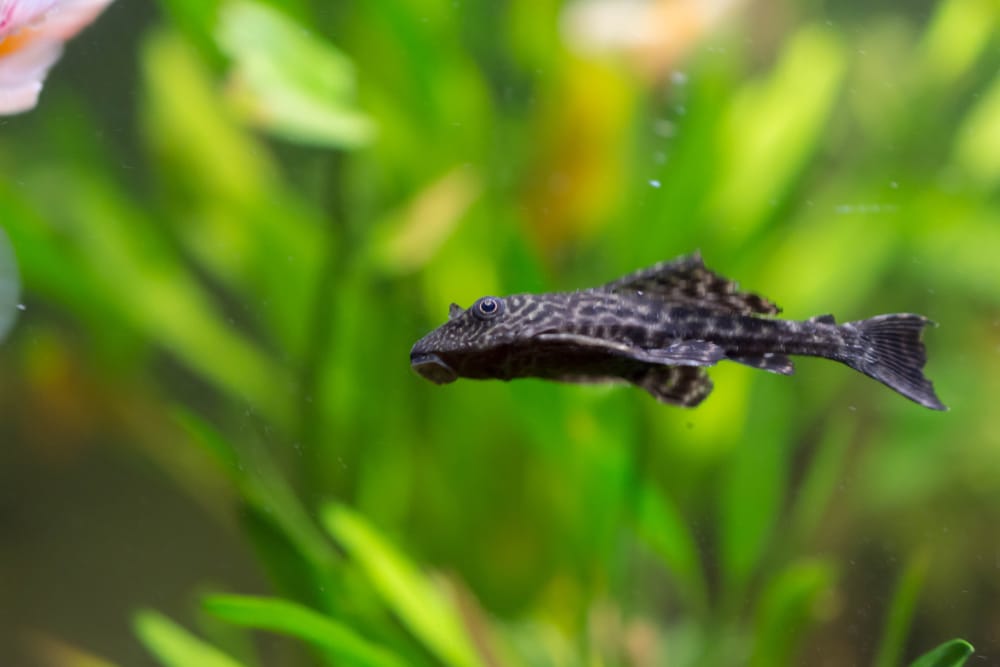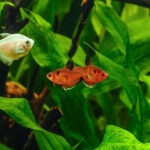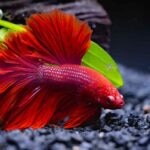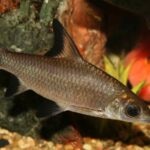8 Algae Eating Fish For Your Freshwater Tank

Photo by Shutterstock/MIKITO SHIRAI
An ecological concept called “The Pyramid of Numbers” shows the relative abundance of the various organisms that form a food chain. The organisms that far outstrip all the others in terms of total weight (biomass) are the green plants, which form the base of the pyramid. They are known as “producers,” reflecting the fact that they constitute the first and most significant component on which all the other members of the pyramid depend, either directly or indirectly. Without green plants, there would be no life on earth.
Plants are so important because they “capture” the sunlight’s energy and photosynthesize it by binding carbon dioxide and water to produce carbohydrates, one of the basic foods that all living things require. Although animals must obtain carbohydrates, they cannot produce it as plants and some bacteria do. Lacking the ability to photosynthesize, animals must hence become consumers.
Herbivores obtain carbohydrates by consuming plants directly. Carnivores and piscivores consume other animals, including some that consume plants. And so it goes on up the pyramid, with each level generally being represented by a progressively lower number of consumers.
A typical example from the fish world would be as follows. Free-floating green algae (a producer) could be eaten by a water flea (Daphnia). Thus, the Daphnia becomes the primary consumer (the first to eat the producer). If a small fish eats the Daphnia, the fish is a secondary consumer (it consumes the producer’s nutrients through a primary consumer). That fish could later be eaten by a tertiary consumer, such as a pike. The pike, if small, could be consumed by a heron, or if large, could be fished by an angler and later eaten — and so on. Clearly, it takes numerous free-floating algae to sustain a single Daphnia. Fewer (but still quite numerous) Daphnia would be required by a mosquitofish. It would take even fewer mosquitofish to feed a pike, etc.
It is this relationship that gives the Pyramid of Numbers its characteristic shape, particularly when biomass is substituted for actual numbers; for example, a single Daphnia weighs less (has a lower biomass) than the total number of algae it eats over a lifetime. We are all part of this intricate relationship.
Suckermouth Adaptations
Since herbivores only have a single level below them (the green plants), it seems logical that any feeding adaptations they possess should be finely adapted to plant consumption. The same obviously applies to secondary, tertiary and other consumers. Some of these adaptations are internal and cannot be easily observed. However, the external ones can.
By far, the best-known herbivorous fishes available in the hobby include the various plecos (Hypostomus, Glyptoperichthys and Liposarcus spp.), the bristlenosed catfishes (e.g. Ancistrus spp.), and the panaques or sucker catfishes (Panaque spp.).
A considerably rarer fish is Euchilichthys guentheri. Yet, despite its rarity, there can be little doubt concerning the level at which it feeds (and lives) or the nature of its diet. In common with all its better-known counterparts, the Euchilichthys has a downward-pointing, sucker-type mouth which clearly indicates that it is predominantly a “solid substrate feeder.” I hesitate to use the term “bottom feeder” because the orientation of the mouth has evolved to eat off of various solid surfaces (such as rocks, leaves, exposed underwater roots or branches, or any other submerged objects) — not just surfaces parallel to the bottom.
Obviously, not all feeding sites have surfaces which are parallel to the bottom of the stream or river in which the fish are found. To maximize these fish’s total feeding areas, the suckermouth has adapted to allow a fish to eat not only off the top of a submerged branch, for example, but also off its sides, underside and other various protruberances. This adaptation applies to algae-eaters in home aquaria, which not only eat algae off the bottom of the tank but also cling to the sides of the aquarium in search of food. Without the suckerlike mouth, it wouldn’t be able to attach itself; it would simply fall off.
“Padders” and Croppers
A suckerlike mouth does not, however, tell us what diet a fish has. To find essential clues concerning this, we have to look at other features, particularly the teeth. Their number, shape and distribution all carry important messages. The fish mentioned all exhibit several shared characteristics. They all possess numerous small teeth arranged in padlike groups which can be made to lie flat against a chosen surface simply by resting the mouth against the surface and operating the sucker mechanism.
The vast majority of encrustations scraped off by these fish are algae. However, many microscopic organisms, such as certain species of protozoans (single-celled animals), are known to live among encrusting algae. Algae-scraping species may therefore passively supplementing their vegetable diet with a small, but regular, input of animal matter. The same could be said of other predominantly herbivorous species, such as the various mollies (Poecilia sphenops, P. latipinna) which spend a great deal of time cropping algae in a similar way to their terrestrial equivalents: cows, sheep, zebras and the like.
Despite the huge, obvious differences between a cow and molly, they both exhibit remarkable similarities in the form of their plant-cropping “equipment.” Basically, what is required is a system consisting of two straight edges which can be brought together, almost like a pair of pincers, at right angles to the vegetation that needs to be cut. If you look at the feeding arrangements possessed by both cows and mollies, this is precisely what you find — and the similarities don’t end there, either.
Internally, herbivores must have a digestive system capable of extracting the maximum amount of nourishment from their relatively poor-quality food, with its hard-to-digest cellulose cell walls. Such a situation demands that ingested plant matter be made to travel the longest possible distance along the digestive tract.
It will come as no surprise, therefore, to discover that herbivores, be they horses or algae-eaters, possess long, convoluted guts. This is so typical that it is quite possible to make statements concerning the diet of a fish, even if the only evidence available is a preserved specimen of unknown identity.
Understanding Grazers
Although many people are aware of the food pyramid, most people think of it in terms of terrestrial animals. Understand where your plant-eating fish fall in the pyramid and their corresponding biology, and you will be a step closer to understanding the world of fish in general. A few fish tank accessories also might enhance the environment.



